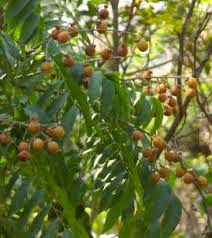.jpg)
The Soap Nut Tree is a mainstream and attractive tree found in many pieces of India and it has a place with the plant family Sapindaceae. The compound leaves are pinnate with 2-3 sets of pamphlets that are 7.5-18 cm. long. They are lanceolate, whole, smooth above and to some degree bushy underneath. The non-conspicuous blossoms are grimy white and found on terminal groups. The a few lobed, one-seeded plump natural products are secured with hairs when youthful yet when they are develop and ready, they are bare and wrinkled.
Restorative USE:
* Expectorant, sore eyes and opthalmia.
* Anthelmintic or to oust worms from the body, loss of motion of the appendages and lumbago.
* Oedema.
* Controls dandruff and advances development of hair.
The most effective method to USE:
* The mixture of the roots is utilized as an expectorant to expel mucus, and as an eyewash to fix sore eyes and general eye contaminations.
* The roots and natural products are utilized as a decoction to oust worms from the body, for loss of motion of the appendages and lumbago.
* The smashed natural products might be connected remotely over swellings.
* Soak a bunch of developed organic products in a pail of water and utilize this water as a hair wash or a characteristic cleanser to control dandruff and to advance the development of hair.
PARTS USED:
The roots and natural products.
Portion:
As suggested previously.
Typical Dosage For:
Grown-ups: 4 or 5 mugs per day.
Matured 6 to 9 years: 2 mugs per day
Matured 2 to 5 years: 1 container daily
1 to 2 years: 1/2 container daily
Underneath 1 year: 1/4 or less container daily
A Useful Table for Quick Measurements:
1 tbsp = 5 grams (green herb)
1 dessertspoon = 2 grams (dry herb)
1 teaspoon = 25 drops
1 container = 16 tbsp
1 liter = 7 or 8 mugs



.jpg)

.jpg)
.jpg)



0 Comments